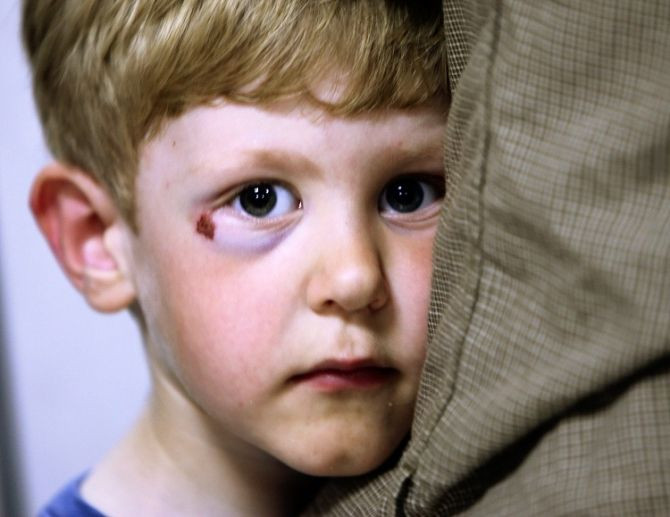Falling Economy Blamed for Significant Rise in Child Abuse Hospitalization Rates

Rates of physical abuse and brain injury among U.S. children have escalated in the early 21st century, and the recent economic recession and housing crisis may be to blame, according to new research.
Researchers noted that even though overall injury rates fell by 0.8 percent per year over the same period, overall physical abuse and brain injury increased significantly during the same period.
A new study published in the journal Pediatrics, found that rates of hospitalizations for physical abuse rose by 0.79 percent and admissions for traumatic brain injury rose by 3.1 percent from 2000 and 2009.
Dr. Joanne Wood of the Children's Hospital of Philadelphia and her colleagues also found that the rate of child abuse requiring hospital admission increased by 3 percent and the rate of traumatic brain injury suspected to be caused by child abuse increased 5 percent every year for every 1 percent increase in the 90-day mortgage-delinquencies from 2000 to 2009.
"We were concerned that health care providers and child welfare workers anecdotally reported seeing more severe child physical abuse cases, yet national child protective services data indicated a downward trend," Wood said in a statement. "It's well known that economic stress has been linked to an increase in child physical abuse, so we wanted to get to the bottom of the contrasting reports by formally studying hospital data on a larger scale."
The latest study highlights opportunities for child welfare agencies and hospitals to collaborate and share data to develop more targeted prevention and intervention strategies in different at-risk communities.
"Two major themes emerge from this study," said Wood. "First, we see a clear opportunity to use hospital data along with child welfare data to ensure a more complete picture of child abuse rates both locally and nationally.
"Second, the study identifies another economic hardship – mortgage foreclosures – that is associated with severe physical abuse. As the foreclosure crisis is projected to continue in the near future, these results highlight the need to better understand the stress that housing insecurity places on families and communities so that we can better support them during difficult times," she added.
Researchers said that public agencies working with vulnerable children and families can be more prepared to assist when the risk factors linked with increased child physical abuse rates are understood.
"For example, early prevention efforts could start with a pediatrician or housing counselor providing resources and social services referrals for families," Wood explained.
Statistics from the U.S. Department of Health and Human Services found that child physical abuse can lead to long-term dire societal and individual consequences, including a direct increase in reliance on public assistance and social services, such as from Medicaid and foster care to more indirect costs like higher rates of criminal activity, mental illness, substance abuse and domestic violence.
"A study like this cannot tell us what stressors may be impacting an individual family, but can illustrate the toll that the recent recession may be having on families in general, in this country," Researcher Dr. David Rubin, director of PolicyLab at The Children's Hospital of Philadelphia, said in a statement.
"It is a reminder to me that when I see families in my practice who have lost their insurance or who have changed homes, to probe a little further about the challenges they are facing. As communities, we all need to reach out a little more to identify which families may be in crisis and help guide them to appropriate resources for support," Rubin added.
Published by Medicaldaily.com



























